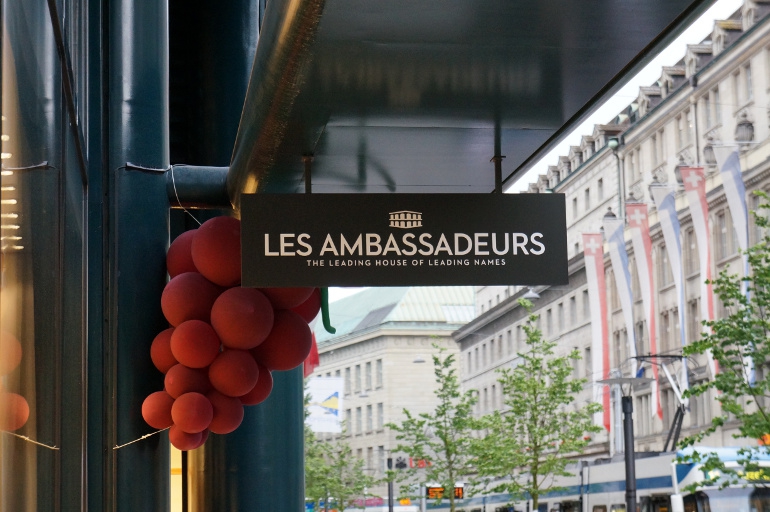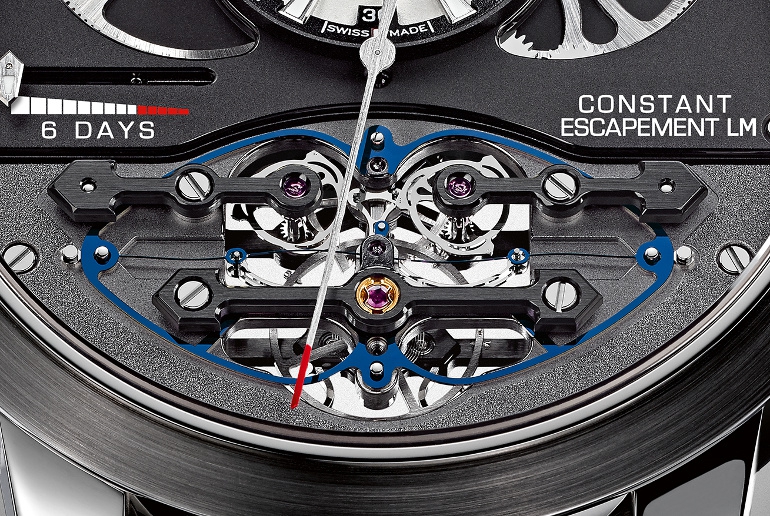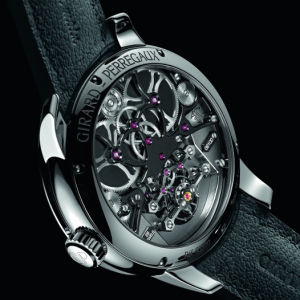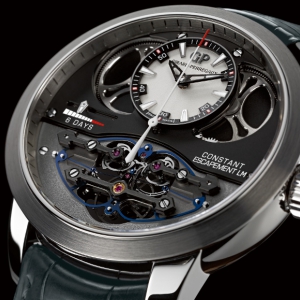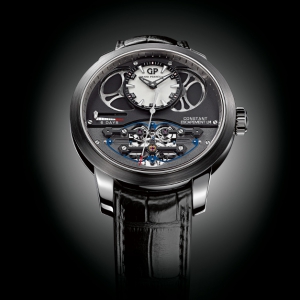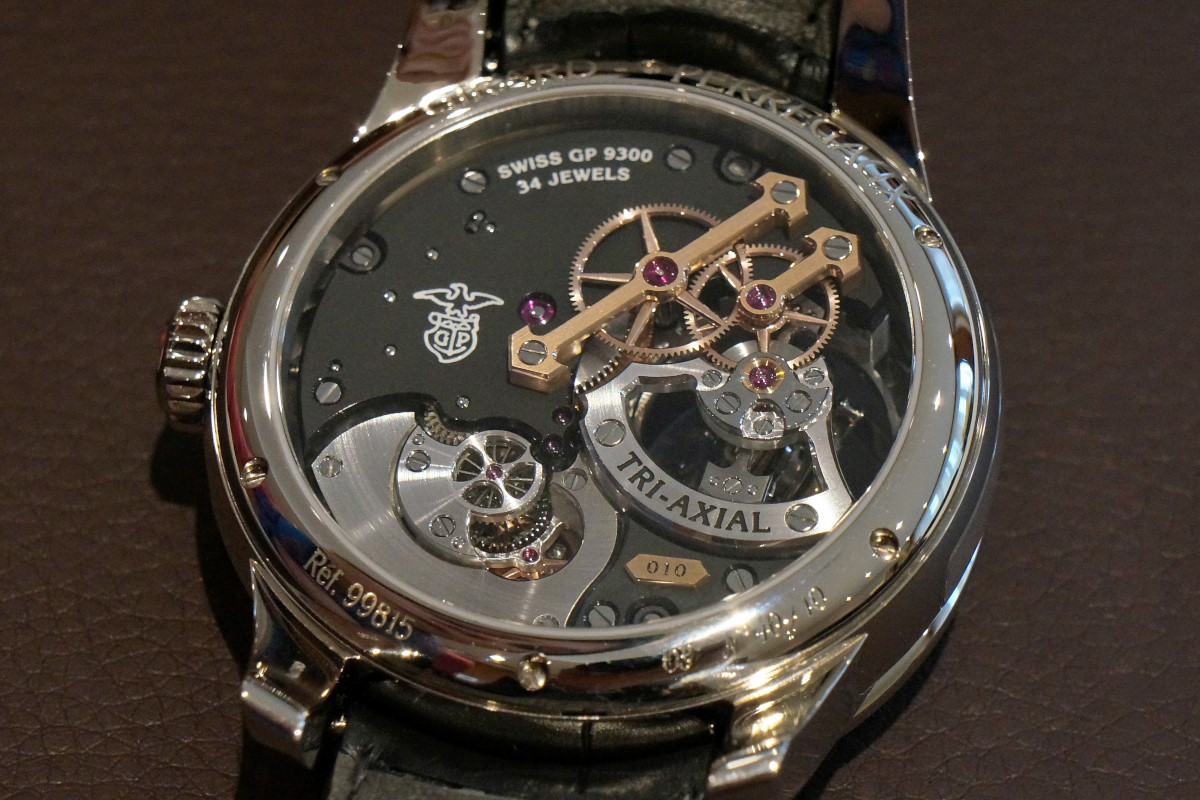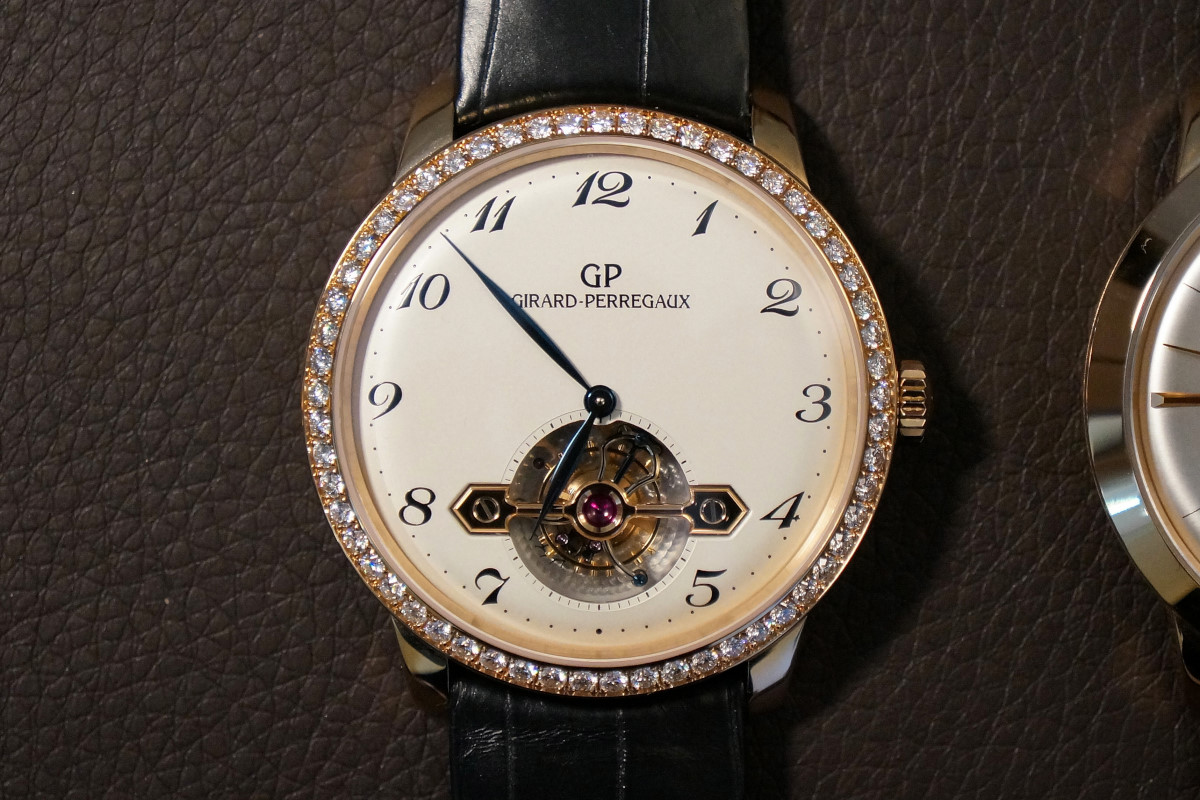Ever since the birth of mechanical watches a rather significant factor has kept watchmakers occupied: how to apply constant force impulses on the balance wheel that contributes to the regular and precise operation of watches.
This was the topic of the 3rd Espace Connaisseur in Les Ambassadeurs’ 50th jubilee year, too. The presentations were once again gripping. Timm Delfs horlogerie expert and journalist with his great talent to explain complex structures and issues in an illustrative manner, started with a historical overview of escapements. His speech was followed by an introduction to the Girard-Perregaux Constant Escapement through the interpretation of Willy Schweizer historian and curator of the Girard-Perregaux Museum and Heritage.
Constant Escapement
Let me explain the challenge via a recent experience of mine. The Zürcher Spring Tastings is a cool event in Zürich, when the boutiques of Bahnhofstrasse, one of the world’s most popular shopping streets, invite their customers to a joint spring welcome. Everyone with an invitation card receives a special black bracelet that serves as an entry pass to the stylish parties of all participating shops. When I arrived at Les Ambassadeurs, the start of my tour, I was totally wound-up and we immediately dived into an off-hand timepiece presentation. Throughout the entire evening we went from one boutique to another and enjoyed ourselves greatly, but approaching the end I felt to have lost a little bit of my intensity.
That’s exactly what happens with mechanical watches; as the barrel spring loses tension while running, the intensity of the impulses decreases and the movement starts to work slower.
Engineers of Girard-Perregaux launched a project in the middle of the last decade to find a way to ensure constant impulses on the balance wheel throughout the entire running reserve of the timepiece.
Now, to realise such in a mechanical engine is rather tricky. What you need of course is a good idea, which is simple enough to be sufficient and materials that bear indefatigable attributes to fulfil their mission for the length of decades in operation.
The fundamental idea of the new constant escapement is that by applying an interim buckling component to the escapement, the energy transferred back onto the balance wheel remains constant. The buckled blade, as they call it, works similarly to a bended business card – when you form a D shape by exerting force on its top and bottom and start pushing from the side, it flips to a C shape instantly when reaching the most unstable state.
All watchmaking events in 2014 were loud of using silicon in traditional Swiss lever escapements – in these cases silicon is rather optional in enhancing the working parameters of the timepiece. Using this material for the buckled blades on the other hand is kind of mandatory, since no other presently available composite could perform this buckling movement with exactly the same characteristics in the long run. Thus, Girard-Perregaux in cooperation with Centre Suisse d’Electronique et de Microtechnique (CSEM) in Neuchâtel have developed the blade that is only 14 micron (6 times thinner than human hair) and that forms a monolithic structure with its frame. There is an interesting video about the process, check it out.
The pins of the impulse lever are in contact with the blade and when it buckles the lever moves too, swinging its head between the two nickel escape wheels to release the power stored in the two barrels bit by bit. The whole escapement is designed in a way that it can be handled by a specialist watchmaker as a single module.
In 2008 Girard-Perregaux presented the first working prototype and filed patents immediately, of course. 2014 has seen the birth of the first piece in the series of watches equipped with the new constant escapement.
The first model with the new escapement
The first model of the Haute Horlogerie Constant Escapement collection is a 48mm diameter white gold watch with an off-centred sub-dial for hours and minutes at 12 o’clock. The escapement itself is clearly visible on the dial with its butterfly wing frame and the vibrating blade. The Constant Escapement beats at the frequency of 3 Hz or 21,600 vibrations per hour. It has also a power reserve for minimum 6 days.
Girard-Perregaux received the “Aiguille d’Or” award in 2013, the most coveted distinction in the watch industry, at the “Geneva Watchmaking Grand Prix” for its ground-breaking Constant Escapement L.M. timepiece.
Photo credits: Girard-Perregaux, Loupiosity.com.
All registered trademarks are property of their respective owners.
All rights reserved.


